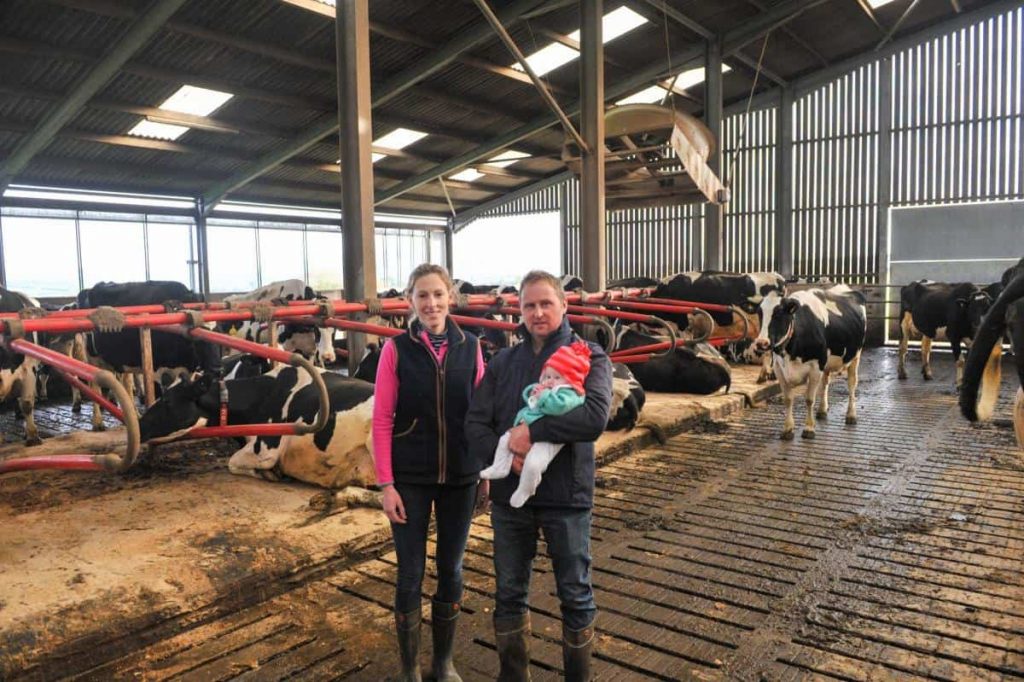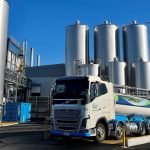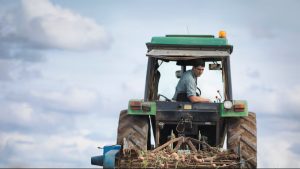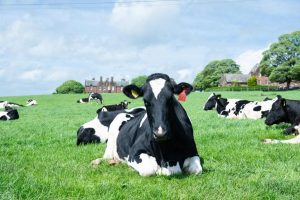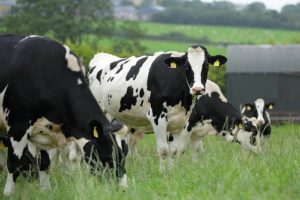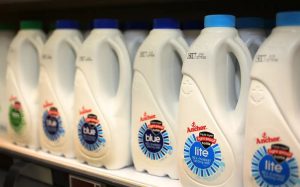
Pembrokeshire dairy farmers Mark and Caroline Davies calculate that retrofitting fans into cubicle housing to keep cows cool is worth £27,000 to their business.
Mr and Mrs Davies built new housing for their herd of 250 Holstein Friesian cows at Newhouse Farm, Little Newcastle, in 2017.
Although the sides were left open to allow natural ventilation, on still days it was not enough and on hot days cows were suffering from heat stress.
This was impacting on udder health, fertility and milk yields and general illness in the fully housed herd.
To improve the environment, six 72-inch fans supplied by VES-Artex were installed over the cubicle beds in the spring of 2021 and a 55-inch model over the calving area, all variable speed and automatically controlled.
“These were fitted seven or eight feet above the cubicle beds so that air would blow over the cows when they are lying down,’’ Mr Davies explains.
“We are no longer seeing the health and production problems we had, it is a big relief.’’
Each fan cost £2,000 and, as they required three phase electricity, the installation costs were £7,500.
Mr Davies says that the over the entire year the fans add 5-10% to energy costs and 15-20% during the peak months.
But, balanced against the benefits, they provide a good return on investment, he adds.
In a system that produces 2.7m litres of milk, the savings to the business from not losing milk yield and fertility and by retaining cows in the system that might otherwise have been culled due to mastitis and other issues, adds up to £27,000 a year.
“That is equivalent to 1ppl in milk income,’’ Mr Davies points out.
Dairy cows are very sensitive to temperature – starting from 22°C and 50% humidity, they accumulate heat in their bodies and this reduces milk production.
Typically 39.1°C is recognised as the starting point of heat stress.
Even when a shed is naturally well-ventilated, there are days when cows come under pressure from heat stress.
Huw Jones, of VES-Artex, says there is a very strong case for installing fans. “If the environment is not right the cows won’t perform,’’ he says.
“A cow craves consistency in her day but in general, for UK housed systems, the one area which lacks consistency is the climate she is in.’’
Airflow will take the path of least resistance – the biggest resistance in a shed is the cow, a headlock, a cubicle, for example. Air never consistently reaches a cow naturally.
Installing fans will ensure a forced air exchange and air velocity.
The key to creating a comfortable environment is the placement of the fans, says Mr Jones.
“It is all about air movement at a cow level, and to achieve an effective cooling velocity at cow level that is great enough to mitigate heat stress.’’
When a ventilation system is designed, the air speed target at the last cow from the fan should always be the determining factor when deciding fan spacing.
The wind chill effect doesn’t work if the air speed is above the cow’s head which is why systems must be designed for air velocity at cow level.
In the housing itself, start with the cubicle beds, Mr Jones advises.
“You want the cow to be lying there for 14 hours day and she will typically maintain her feed and water visits when fans are located there,’’ he says.
Other points to consider are stall layout, crossover location, prevailing wind or where the slurry store or silage pit is located in relation to the housing, to ensure the air being brought into the barn is the best quality it can be for the cows.
At higher temperatures, other means of cooling such as soaking need to be considered in combination with air velocity, Mr Jones suggests.
“Perhaps, as average temperatures increase in the British climate, there will be need for adding additional fans along the feedlines or soaking systems.’’
